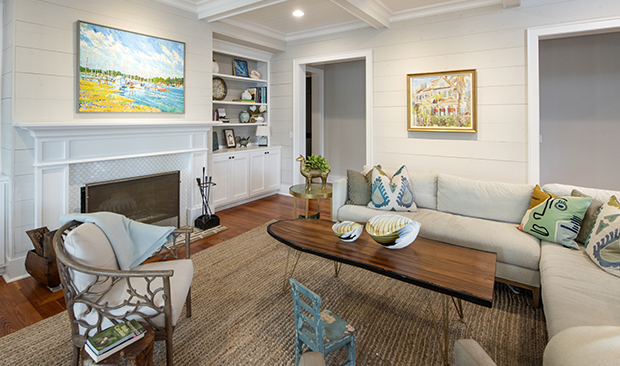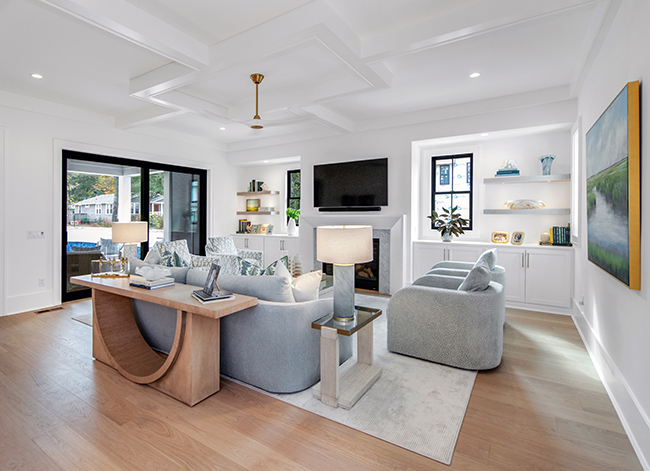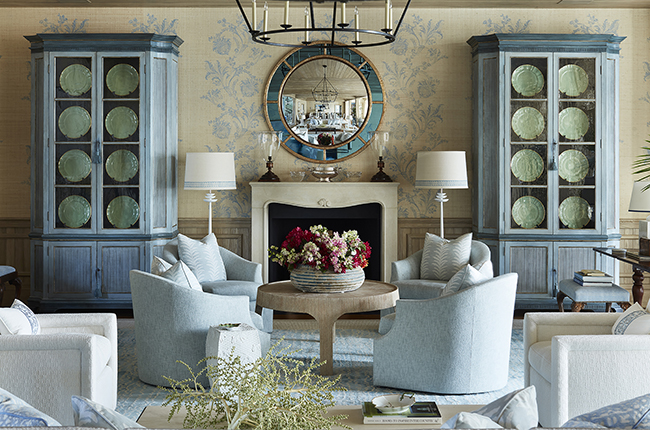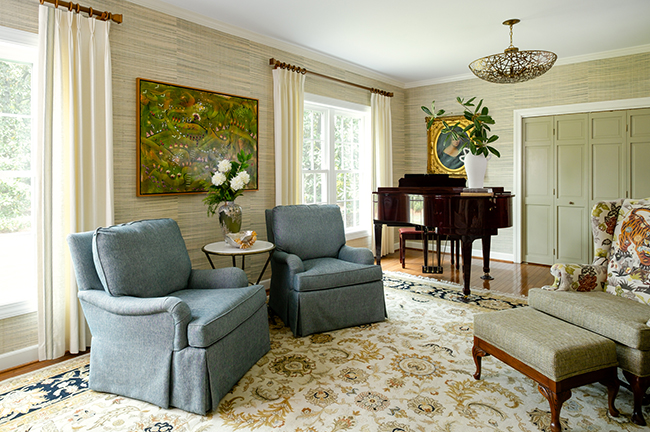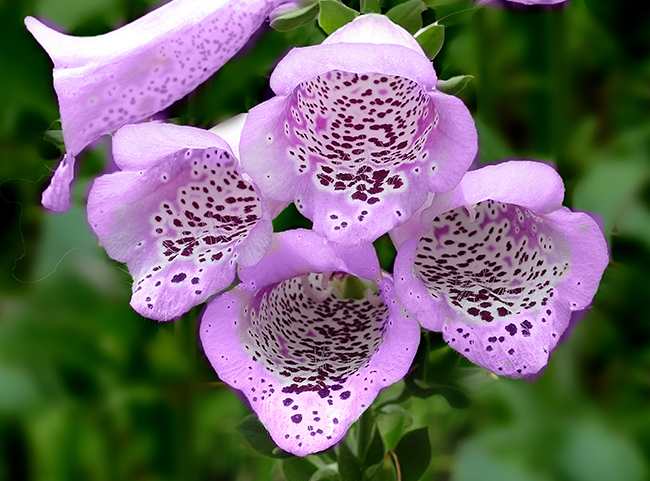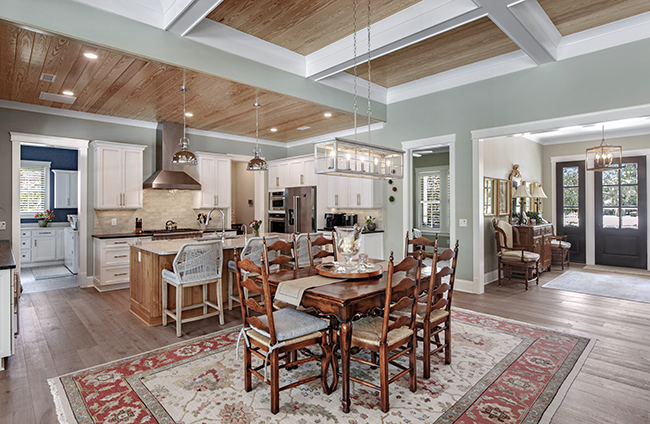Where the Goldfish Swirl
03 May 2022
The sights, sounds and sheer pleasure of a backyard pond
Story and Photos by Christine Hall
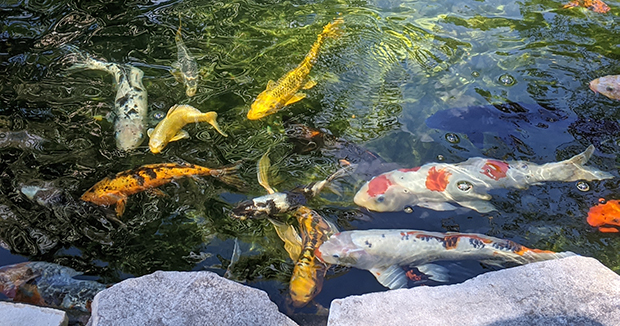
On most days, in the stillness of morning, our small, backyard pond beckons me to walk to where the goldfish swirl. I love to sit near the water’s edge, coffee in hand, to take in the sights and sounds. In the evenings, the croak of a frog or trill of a cricket will draw me back. The reflections in the moonlight dance as I unwind, quieting my thoughts.
Our garden pond has proven to be a leading feature in our backyard. It acts as a natural focal point where we can entertain, play, and rest. And it introduces a powerful mix of mood and movement that I have found unmatched on dry land.
Digging In
Our pond was built with our own hands and began as a project request from our nature-loving daughters. They had strong interest in building an aquatic habitat to attract frogs, snails, and other wildlife they encountered in the yard. Loving to spend time outdoors myself and imagining a Monet-inspired water garden complete with running water and floating lilies, I had surprised them that day with a resounding “Yes!”
I remember the excavation and building process well – particularly the role our dogs played in the disruption of the dirt piles. With a rather full garden already, we had difficulty choosing a suitable space. Ultimately, an 8’x6’ area in front of our foundation shrubs, near a crepe myrtle for shade, and not too far from our backdoor, was deemed prefect.
It was not long into our digging endeavors before we realized we needed to do some more research. Was our liner large enough? How much space should we leave around the edges? Which ground medium was going to work best?
After a quick trip to a local aquatic nursery, we were back on track and able to implement a few tweaks to our plan. One of the most important things we learned in the process was to first determine your goals and plan from there. An inground pond can be a rewarding addition to your garden, but the success of any feature relies on the amount of forethought you put into it. For our family, in the course of a weekend, our daughters had the complete mini pond of their dreams. During our adventure, however, we learned a few key elements to a successful project.
Rookie Mistakes:
Positioning under a tree.
While having a canopy of shade for fish or wildlife sounds appealing, the build-up of decomposing leaves can harm your pond and fish. Choose instead to place your water feature near a tree or natural area of shade, but not in a place where leaves will continuously fall. The most important factor is to choose a site that gets shade in the afternoon, so that the water does not become too overheated.
Not leaving enough workspace.
For close enjoyment, monitoring, and cleaning you will want any pumps and filters to be easily accessible, which includes around the perimeter of the pond. If rocks or plantings become too obtrusive you will not be able to reach certain areas without trampling plants or climbing through rocks. A 2-feet-wide walking area is ideal.
Wasting a fertilizing source
Pond water can be a great fertilizing source in your garden so use it to your advantage. If you need to pump any water or transfer any out of the pond for cleaning, be sure to dump some in your flower gardens or shrubs for the beneficial bacteria.
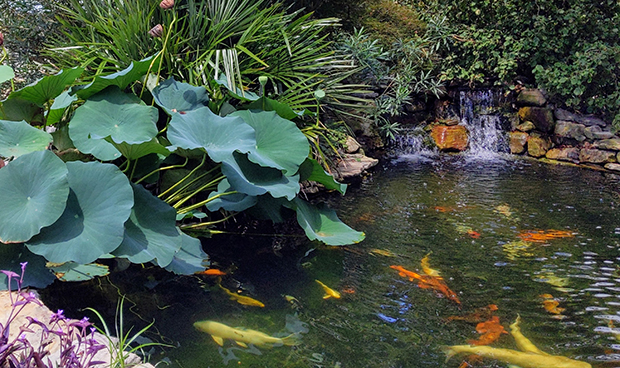
Combining koi with water plants.
In their natural environment, koi love digging in mineral-rich clay for food. When gardeners place sunken potted plants or plant baskets in their ponds, koi often uproot the plant, causing it to float to the top where they will eat the leaves. Goldfish do not have this same tendency. Most aquatic plants also need sun, whereas koi enjoy some shade due to being subject to sunburn.
Worrying about the water bill.
For anyone concerned about the amount of water a pond may require, consider this perspective: Watering flower gardens often takes more water per square foot than a water garden or pond. And that same space in a water garden has sound, movement, and life, and is exponentially more sensory positive.
For expert help locally with your aquatic gardening adventures, contact Cape Fear Water Gardens at 910-200-6053 or Lloyds of Landscape, Inc at 910-686-4984.


